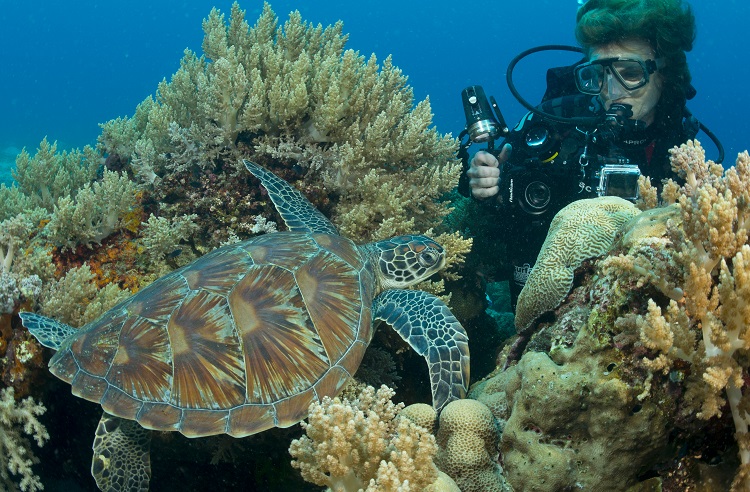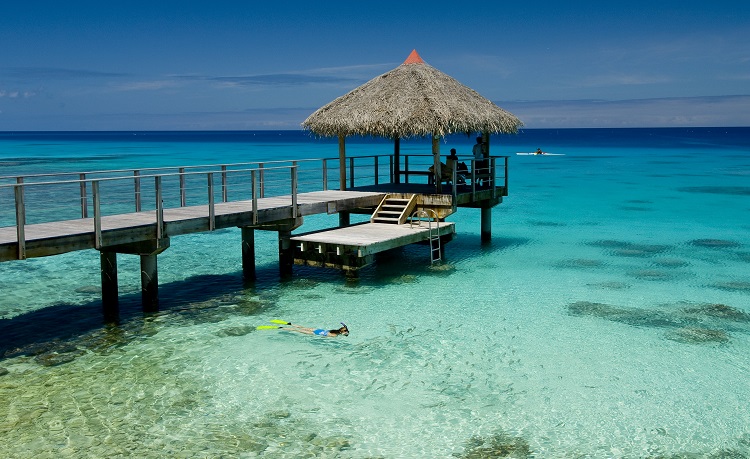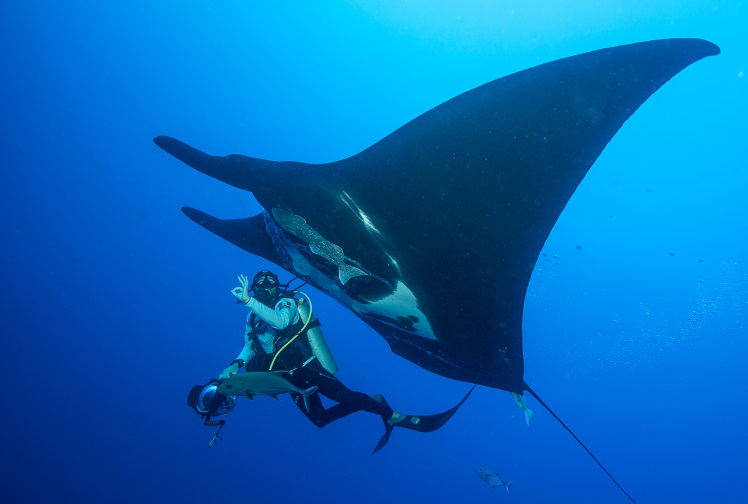Cherie exploring Deacons Reef - PNG
05-Jan-2011 Back to Image Gallery
SEVERAL PHOTOGRAPHY FIRSTS! In 1988 I was busy shooting images for my second coffee table book, Australia & the South Pacific. I was also aboard MV Telita during her maiden voyages exploring virgin reefs in the very capable hands of owner/skippers Bob and Dinah Halstead. Both are award winning pioneers of PNG diving and underwater photography. As I surfaced from a dive on the most beautiful coral reef I had ever seen I asked Bob if it had a name yet. When he said no! I replied, well it does now! Later that same year I finally won first place in Australasian Underwater Photographer of the Year. One of my five award winning images was from Deacons Reef.In 2006, aboard MV Telita on a Dive 2000 photo tour with friends I found myself back at Deacons Reef. I have still not found a more beautiful reef so my challenge was to capture new images. This became even more challenging when, without warning, my photo buddy Richard Arnold handed me his new Digital D2X camera underwater. This picture was one of my first images shot with digital and right after this trip my film cameras were retired!
Photo Data: Location: Deacons Reef, Tawali Resort, Milne Bay, PNG. Genre: Extreme Wide Angle Sunlight & Strobes. Nikon D2X, 10.5mm Full Frame Fisheye lens, Seacam Housing & Dual Strobes, ISO 100, Manual Exposure Mode. Exposure f7.1 @ 1/200 th second. Image by Kevin Deacon.
Photo Hints: Use of extreme wide angle lenses with an FOV (field of view) of 160 to 180 degrees is essential to capture large areas of reef or shipwrecks. These are available for both Compact cameras and DSLR cameras. The photographer must still shoot close to the foreground subjects as strobes will not reproduce vivid colours beyond a couple of metres range. Two strobes will be needed to light the total FOV. More powerful strobes will also produce more saturated colour than average strobes when used at longer range and the power output of the strobes will need to be individually adjusted to provide even lighting to both foreground subject (fish & corals) and background subject (model). Incidentally, this can be impossible to achieve with TTL strobe mode.



